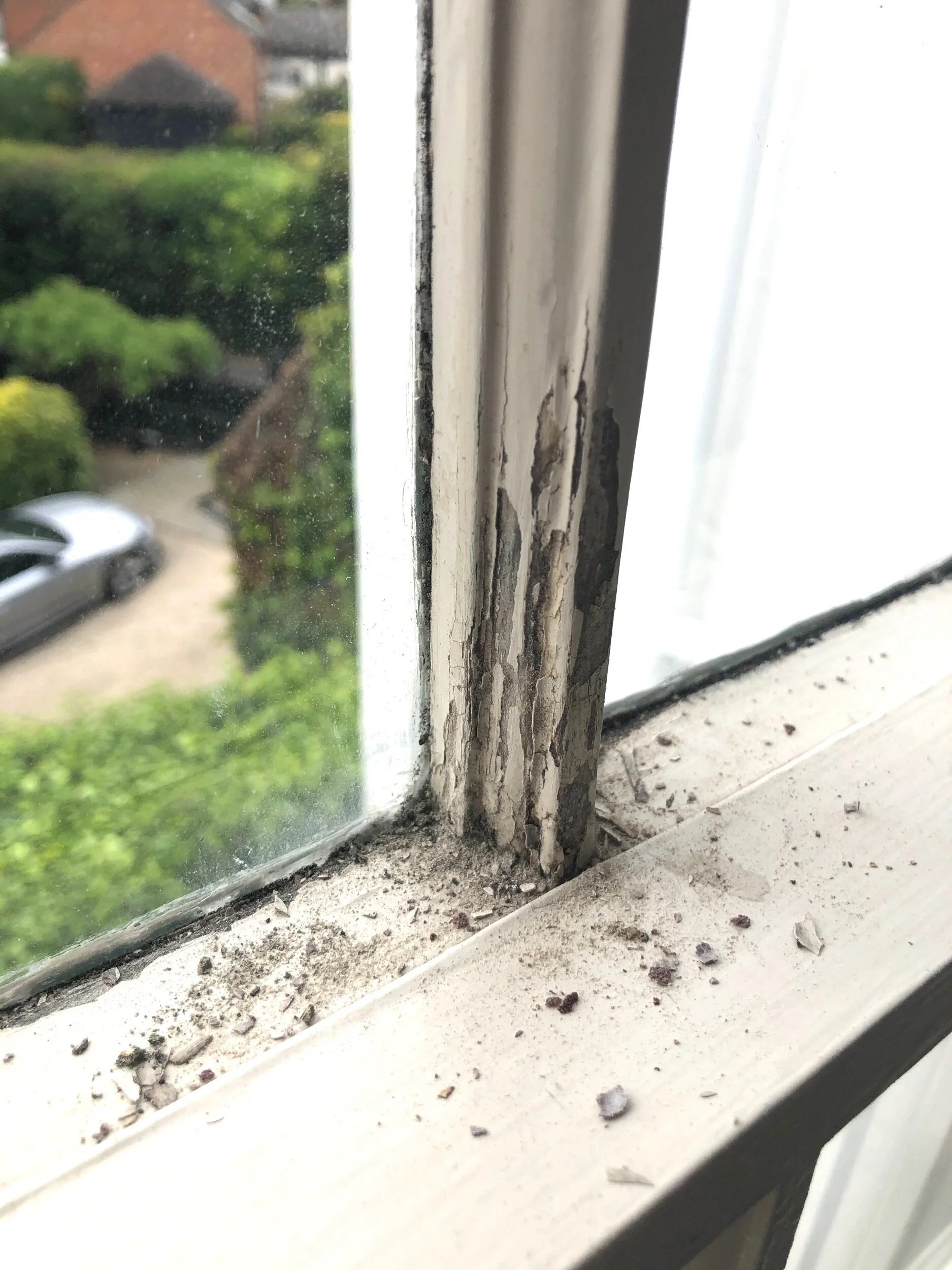Paint Problems: Tackling Peeling, Cracking and Flaking on Sash Windows
A sash window adorned with a Roman blind in Harbour Stripe by Tori Murphy
Co-written featured partner post
Wooden sash windows are a real asset to a home. Aesthetically beautiful, they completely elevate the architecture of a house. However, while they look great, they can be very high maintenance. On the inside, frost and condensation lead them to quickly build up black mould in the corners and for the paint to shrivel away from the wood. On the outside, regular upkeep is required to protect them from the elements, as paint problems such as peeling, cracking, and flaking mar the beauty of these classic features.
Window film is a great way to add privacy to your period windows without hiding them with heavy soft furnishings. Image Credit: Purlfrost
Sash windows are common on period properties (especially Victorian homes, historic buildings, and other architectural heritage sites), with the cost of sash window restoration varying depending on factors such as access and damage, as well as if the old paint has to be professionally stripped, rather than simply sanded back. It is therefore better to maintain your sash windows to avoid significant repair work in the future. If your windows already require some sash windows restoration, it is good to know how to preserve your restored windows going forward.
Identifying the Causes
Paint problems such as peeling, cracking, and flaking on sash windows can be frustrating and unsightly, but understanding the underlying causes is the first step toward an effective resolution. There are several factors contribute to these issues, which are not limited to but can include:
Moisture Infiltration: Exposure to moisture (whether from rain, condensation, or high humidity levels) can seep into the wood of sash windows, causing the paint to lose adhesion and peel or crack over time.
Poor Surface Preparation: Inadequate preparation of the window surface before painting, failure to remove old paint/properly sanding and priming the wood can lead to poor paint adhesion and subsequent peeling or flaking.
Extreme Temperature Fluctuations: Sash windows suffer significant temperature changes throughout the year. These fluctuations can cause wooden sash windows to expand and contract, leading to stress on the paint layers and eventual cracking or peeling.
Use of Low-Quality Paint: Using low-quality or inappropriate paint products when painting sash windows can result in premature deterioration that includes peeling, cracking, and flaking, especially when exposed to outdoor elements.
Age and Wear: As sash windows age the structural integrity of the wood may weaken, making them more susceptible to paint problems. Additionally, wear and tear from repeated opening and closing of the original sash windows can contribute to paint deterioration.
Practical Approaches to Addressing Peeling, Cracking, and Flaking Paint on Sash Windows
Surface Preparation: Remove any loose or flaking paint using a scraper or wire brush and sand the surface to create a smooth, clean base for repainting.
Repair Damaged Areas: Address any damage to the wood - such as rot or decay - before repainting. Use wood filler or epoxy putty to fill in cracks, holes, or gaps, and allow it to dry completely before sanding smooth.
Prime the Surface: Apply a high-quality primer designed for wood surfaces when painting sash windows. The primer will help improve paint adhesion and seal the wood, providing a stable base for the topcoat.
Choose the Right Paint: Select a top-quality exterior paint formulated for use on wood and suitable for the climate in your area. Consider factors such as durability, resistance to moisture and UV protection to ensure long-lasting results.
Apply Multiple Coats: Apply several thin coats of paint rather than a single thick coat to achieve better coverage and durability. Allow each coat to dry completely before applying the next, following the manufacturer's recommended drying times.
Seal and Protect: Once the paint has fully cured, consider applying a clear sealant or topcoat to provide an extra layer of protection against moisture, UV rays, and other environmental factors.
Regular Maintenance: Inspect them periodically for signs of damage or wear, and promptly touch up any areas of peeling or cracking paint.
Image credit: Purlfrost
Techniques for Sash Window Repair and Restoring Period Sash Windows Affected by Paint Issues
Sash window repair involving paint problems requires careful attention and appropriate techniques. Double glazing retrofitting, sash window draught proofing or other repairs on original windows may cause significant damage. According to the experts, some practical methods for repairing and restoring (especially traditional sash windows affected by paint issues) are as follows:
Restore Architectural Details: Inspect any architectural details or decorative elements on the sash windows (such as mouldings or trim). Use a small brush or fine-tip applicator to carefully paint these areas, ensuring precision and attention to detail.
Periodic Maintenance: Conduct regular maintenance and inspections to ensure the long-term beauty and functionality of your sash windows. Touch up any areas of peeling or cracking paint as soon as they are detected and address any underlying issues promptly to prevent further damage.
Why not paint your windows a bold colour like Dix Blue by Farrow & Ball
If you are unsure about maintaining your sash windows, it’s advisable to consult a professional who can expertly guide you through the painting process to prolong the life of your sash windows. Reputable sash window companies can help with assessing restoration costs and can help you consider if you require sash window replacement, as well as advise other factors such as sash window insulation.







